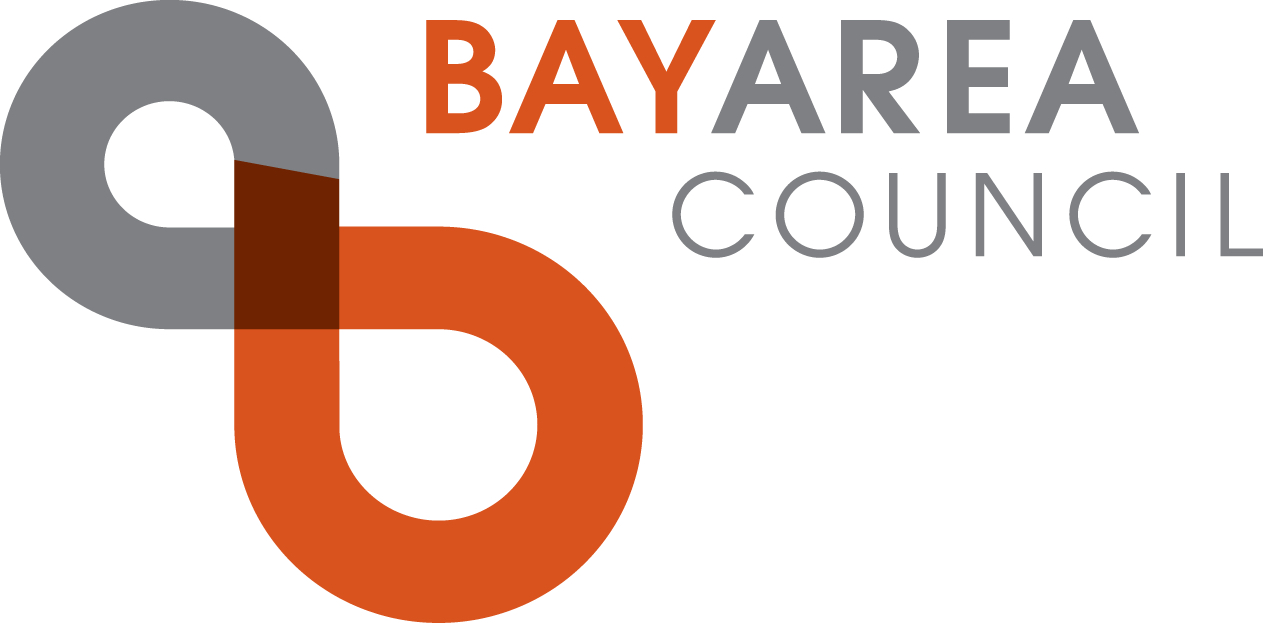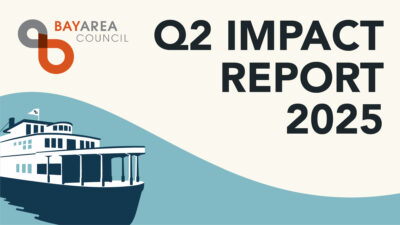Commuter Shuttles “Hub” Approach Means More Traffic, Emissions, Accidents
Replacing the successful system that private commuter shuttles use to pick up and drop off riders with fewer centralized “hub” locations would devastate an important mass transit system and choke San Francisco streets with traffic and pollution, according to a new study by the San Francisco Municipal Transportation Authority. SFMTA estimates a hub system could result in an additional 3,300 cars on city streets every day, resulting in an additional 23,000 tons of carbon and 65 million additional vehicle miles traveled every year, and putting commuters and pedestrians at increased risk of traffic accidents. The study was conducted as part of an agreement that the Bay Area Council helped broker in February with the San Francisco Board of Supervisors to regulate commuter shuttle operations.
“Less is more with the hub approach—more traffic, more emissions, more accidents,” said Adrian Covert, Vice President of Policy for the Bay Area Council. “This study confirms that the current system, which was developed thoughtfully over many, many months, is working well and getting better. Jamming commuter shuttles into fewer locations will drive down ridership, pushing thousands of riders into their cars and onto our already congested streets.”
The study examined four different scenarios for replacing the current system of 109 shuttle stops distributed along mostly large arterial streets with between one and up to 17 centralized “hubs.” Fewer stops would decrease shuttle ridership by up 54 percent, the study found, pouring as many as 3,300 more cars onto city streets and almost doubling greenhouse gas emissions. The “hub” approach would also mean the elimination of up to 230 parking spaces.
“This study was extremely valuable in showing that the current system for regulating commuter shuttles is the most effective in keeping down traffic, keeping streets safe and keeping our air clean,” Covert said.
The study findings are scheduled to be presented at the SFMTA Board of Directors meeting on Tuesday, November 15 at 1 p.m. along with a mid-year review of the existing Commuter Shuttle Program. See the full report>>
SFMTA’s Board will also receive a mid-year review of the Commuter Shuttle Program, which clearly shows the city’s current regulations are working, and that shuttles are getting cleaner, more efficient, and moving away from non-arterial streets. The SFMTA found 76 percent of the fleet now meets 2012 emissions standards or better, up from 59 percent during the pilot program. Shuttles have become more efficient by adding over 1,000 riders using the same number of stop-events. In addition, use of non-arterial streets is down from 26 percent to 9 percent.
Quick Facts
HUB STUDY
- Shuttle ridership predicted to drop by up to 54 percent
- Equivalent of up to 3,300 more cars on the road
- Up to an additional 65 million VMTs added to city streets
- Up to 40,000 tons of CO2
- “Increased risk of collisions in general”
- Significant removal of parking
- More competition for parking
PROGRESS REPORT
- $2.1 million in permit fees through August 2016
- Ridership is up from 8,500 (pilot) to 9,800
- Stop events are the same (3,200) so efficiency is increasing
- Complaints have remained stable
- Use of shared MUNI zones is down from 72% (pilot) to 57% (shift to white zones).
- Use of non-arterial streets is down from 26% (pilot) to 9% of current shuttle stops
- Use of vehicles that meet 2012 emissions standards or better is up from 59% (pilot) to 76%





